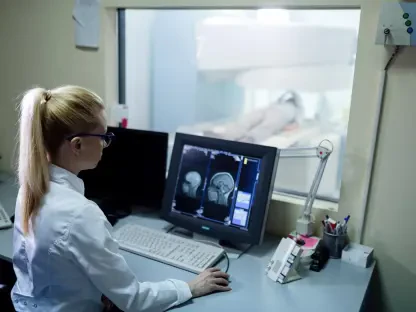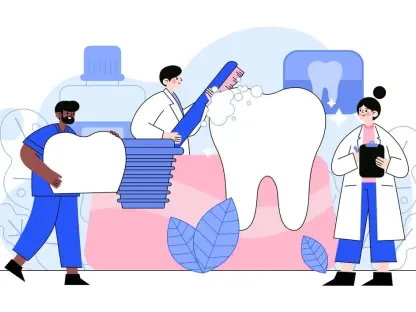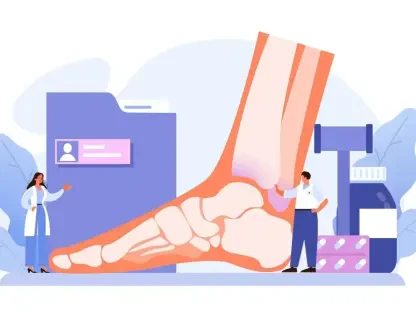The current state of Electronic Health Records (EHR) systems presents both remarkable advancements and significant areas for improvement. By exploring insights from professionals in the Healthcare IT Today Community, this article delves into the potential future innovations in EHR systems that could revolutionize healthcare delivery. The focus is on enhancing real-time collaboration, improving patient access, integrating AI technologies, optimizing provider efficiency, and fostering interoperability.
Real-Time Collaboration and Communication
Effective communication among care teams is crucial to delivering high-quality patient care. Vijay Adapala emphasizes the need for real-time collaboration tools within EHR systems. These tools can facilitate seamless communication among healthcare providers, ensuring that all team members are on the same page regarding patient care plans. Enhanced collaboration can lead to more coordinated and efficient care delivery, ultimately improving patient outcomes.
Other contributors echo this sentiment, highlighting the necessity for better-integrated and more interactive tools within EHR systems. By incorporating features such as instant messaging, video conferencing, and shared workspaces, EHRs can become powerful platforms for real-time collaboration. These innovations can help break down silos within healthcare organizations, fostering a more collaborative and cohesive care environment.
Such streamlined communication pathways ensure critical patient information flows effortlessly among physicians, nurses, and other care professionals, reducing the likelihood of medical errors. This interconnected approach is essential in situations requiring immediate responses or multidisciplinary involvement, such as complex surgical interventions or chronic disease management. By embedding these collaborative functionalities directly into EHR systems, healthcare organizations can also eliminate the need for external messaging platforms, centralizing all critical patient data and communication in one secure system.
Enhanced Patient Access and Integration
Improving patient access to their health data is a critical aspect of modernizing EHR systems. Rahul Sharma and other experts advocate for more interactive views and better integration of social determinants into patient records. By providing patients with comprehensive and easily accessible health information, EHRs can empower individuals to take a more active role in managing their health.
The concept of digital wallets or Personal Health Records (PHRs) is also gaining traction. These tools allow patients to have greater control over their data, enabling them to share information with different healthcare providers as needed. Enhanced patient access and integration can lead to more informed and engaged patients, ultimately contributing to better health outcomes. Moreover, this empowerment can drive a more personalized and proactive approach to healthcare, as individuals become more aware of their health status and potential areas of concern.
In addition to increasing patient engagement, integrating social determinants into electronic health records can provide a more holistic understanding of each patient’s unique context. Factors like socioeconomic status, education, living conditions, and employment may significantly influence health outcomes. By considering these variables, healthcare providers can tailor interventions more effectively, addressing the root causes of health disparities. This comprehensive approach ensures that medical treatment encompasses not only clinical needs but also factors affecting patients’ overall well-being.
AI and Data Digitization
The integration of AI technologies into EHR systems holds immense potential for transforming healthcare. Rahul Sharma discusses the use of Natural Language Processing (NLP) and Computer Vision techniques to digitize legacy data within EHRs. By accurately categorizing patient data and utilizing AI scribes to record and transcribe patient interactions, healthcare providers can save time and reduce errors in data records.
Andrew Hines suggests incorporating simulation capabilities for medical education and clinical decision support. AI-driven simulations can provide valuable training opportunities for healthcare professionals, enhancing their skills and decision-making abilities. The integration of AI technologies into EHR systems can streamline workflows, improve data accuracy, and support better clinical outcomes. These advancements can significantly reduce administrative burdens, allowing clinicians to spend more time on direct patient care and less on tedious documentation tasks.
Moreover, AI’s role in predictive analytics and personalized medicine is becoming increasingly important. Machine learning algorithms can analyze vast datasets to identify patterns and predict disease outbreaks, patient deterioration, or the most effective treatment plans for individuals. By harnessing AI’s analytical power, EHR systems can enable more proactive and personalized approaches to healthcare, improving patient outcomes while optimizing resource utilization. This AI-driven transformation has the potential to set a new standard for efficiency and precision in the medical field.
Cost of Ownership and Provider Efficiency
Addressing the total cost of ownership for EHR systems is a pressing concern for healthcare organizations. Vijay Verma highlights the need to minimize the financial burden associated with implementing and supporting EHRs. By reducing the time providers spend on EHRs, healthcare organizations can allow more focus on patient care.
Open integration with third-party vendors can help address these challenges. By enabling seamless integration with various tools and applications, EHR systems can enhance provider efficiency, reduce staff burnout, and improve overall patient outcomes. Optimizing the cost of ownership and provider efficiency is essential for creating sustainable and effective EHR systems. With streamlined workflows and reduced administrative overhead, healthcare providers can allocate more resources to direct patient care, ultimately enhancing the quality of healthcare services.
Furthermore, leveraging a modular EHR architecture can provide organizations with the flexibility to add new features and functionalities as needed without undergoing complete system overhauls. This adaptability ensures that healthcare facilities can continually evolve and integrate cutting-edge technologies, maintaining their competitiveness in an ever-changing industry. By reducing unnecessary expenses and focusing on efficiency, EHR systems can contribute to financial sustainability, allowing healthcare providers to reinvest savings in patient care innovations and improvements.
Data Integration and Sharing
Merging data across multi-organization systems during mergers, acquisitions, and partnerships presents significant challenges. Stephanie Murray emphasizes the importance of better support for data assimilation into one system. Allowing clinicians to document and share information across systems is crucial for seamless patient care.
Enhancing interoperability and data exchange capabilities is a commonly mentioned theme. By adopting standards like FHIR (Fast Healthcare Interoperability Resources), EHR systems can facilitate consistent and efficient data exchange. Improved data integration and sharing can lead to more coordinated care and better patient outcomes. With advanced interoperability, healthcare providers can compile comprehensive patient histories, enabling more accurate diagnoses and tailored treatment plans.
Moreover, integrating data from various sources, such as wearable devices, remote monitoring tools, and patient surveys, can provide a more holistic view of patient health. These diverse data inputs offer valuable insights into daily behaviors, environmental factors, and long-term health trends, allowing for a deeper understanding and more proactive management of chronic conditions. By breaking down barriers to data sharing, healthcare systems can foster multidisciplinary collaboration, enhance care continuity, and ultimately improve patient experiences and outcomes on a broader scale.
Telehealth Integration
The rise of telehealth presents unique opportunities for EHR innovation. Lyle Berkowitz sees potential in capturing more information before a telehealth visit and utilizing AI tools to analyze patients during video visits. These innovations can significantly improve the quality and efficiency of online care.
Integrating telehealth capabilities into EHR systems can streamline the virtual care process, making it easier for providers to deliver high-quality care remotely. By leveraging AI and other advanced technologies, EHRs can enhance the telehealth experience for both providers and patients. This seamless integration ensures that essential health data captured during telehealth interactions are accurately documented and easily accessible, maintaining continuity of care regardless of the visit’s modality.
Additionally, telehealth integration expands healthcare access to remote and underserved populations, bridging gaps in availability and reducing geographic barriers. Patients can receive timely medical advice and intervention without the need for travel, which is particularly beneficial for those with mobility issues or chronic conditions that require frequent monitoring. By improving the convenience and reach of healthcare services, telehealth-enhanced EHRs can promote better health outcomes and patient satisfaction across diverse demographics.
Innovative Data Visualization
Craig Joseph advocates for a clinician-centered data visualization approach that goes beyond simple dashboards. By adopting design principles from finance or gaming, EHRs can present more engaging and useful interfaces. These innovative data visualizations can highlight critical information and trends, aiding rapid decision-making.
Effective data visualization can help clinicians quickly identify important patterns and insights, leading to more informed and timely clinical decisions. By prioritizing user-friendly and intuitive interfaces, EHR systems can enhance the overall user experience for healthcare providers. Such visualizations can present data in a way that is easier to interpret, reducing cognitive load and enabling faster, more accurate diagnoses.
Moreover, interactive and customizable data views allow healthcare providers to tailor the information presentation to their specific needs and preferences. Whether monitoring vital signs, tracking patient progress, or analyzing outcomes of various interventions, intuitive visual tools can provide valuable context and clarity. By enhancing the accessibility and interpretability of health data, EHR systems can empower clinicians to make the best possible decisions, improving overall care quality and efficiency.
Patient-Centered EHRs
The current landscape of Electronic Health Records (EHR) systems showcases both incredible progress and notable areas that need improvement. This article, drawing insights from the Healthcare IT Today Community, examines the promising future innovations that could transform the way healthcare is delivered through EHR systems. Key areas of focus include boosting real-time collaboration among healthcare providers, improving patient access to their health information, integrating advanced AI technologies, optimizing the efficiency of healthcare providers, and ensuring seamless interoperability between different EHR systems.
Real-time collaboration can significantly enhance the quality and timeliness of patient care by enabling healthcare professionals to share and access patient information instantly, regardless of their location. Improved patient access to EHRs empowers individuals to take a more active role in managing their health, leading to better health outcomes. The integration of AI can streamline administrative tasks, predict patient outcomes, and offer decision support, thereby reducing the burden on healthcare providers and allowing them to focus more on patient care.
Optimizing provider efficiency by simplifying workflows within EHR systems can reduce burnout and improve job satisfaction among healthcare professionals. Finally, fostering interoperability ensures that different EHR systems can communicate seamlessly, reducing information silos and enhancing the overall quality of patient care.









